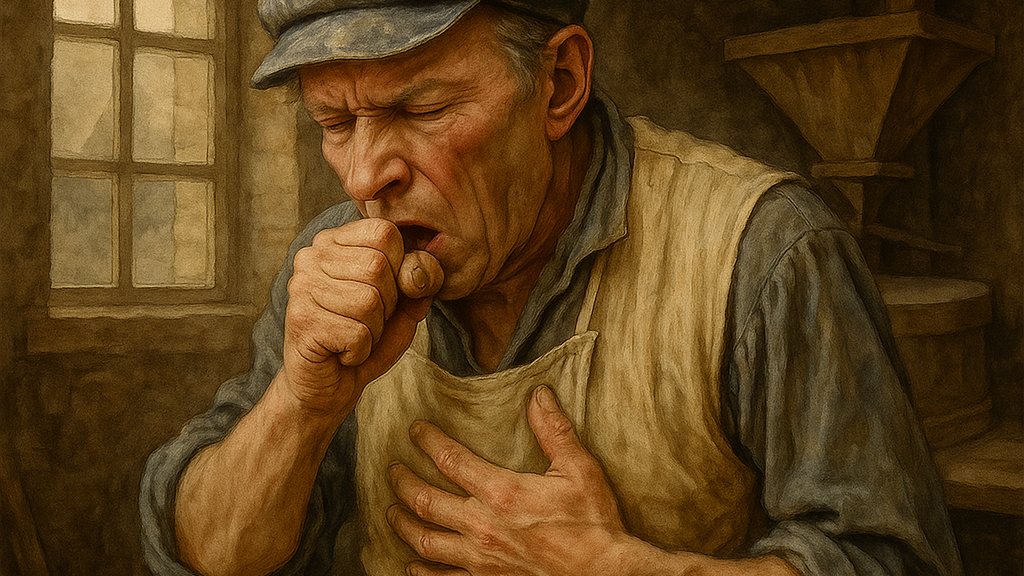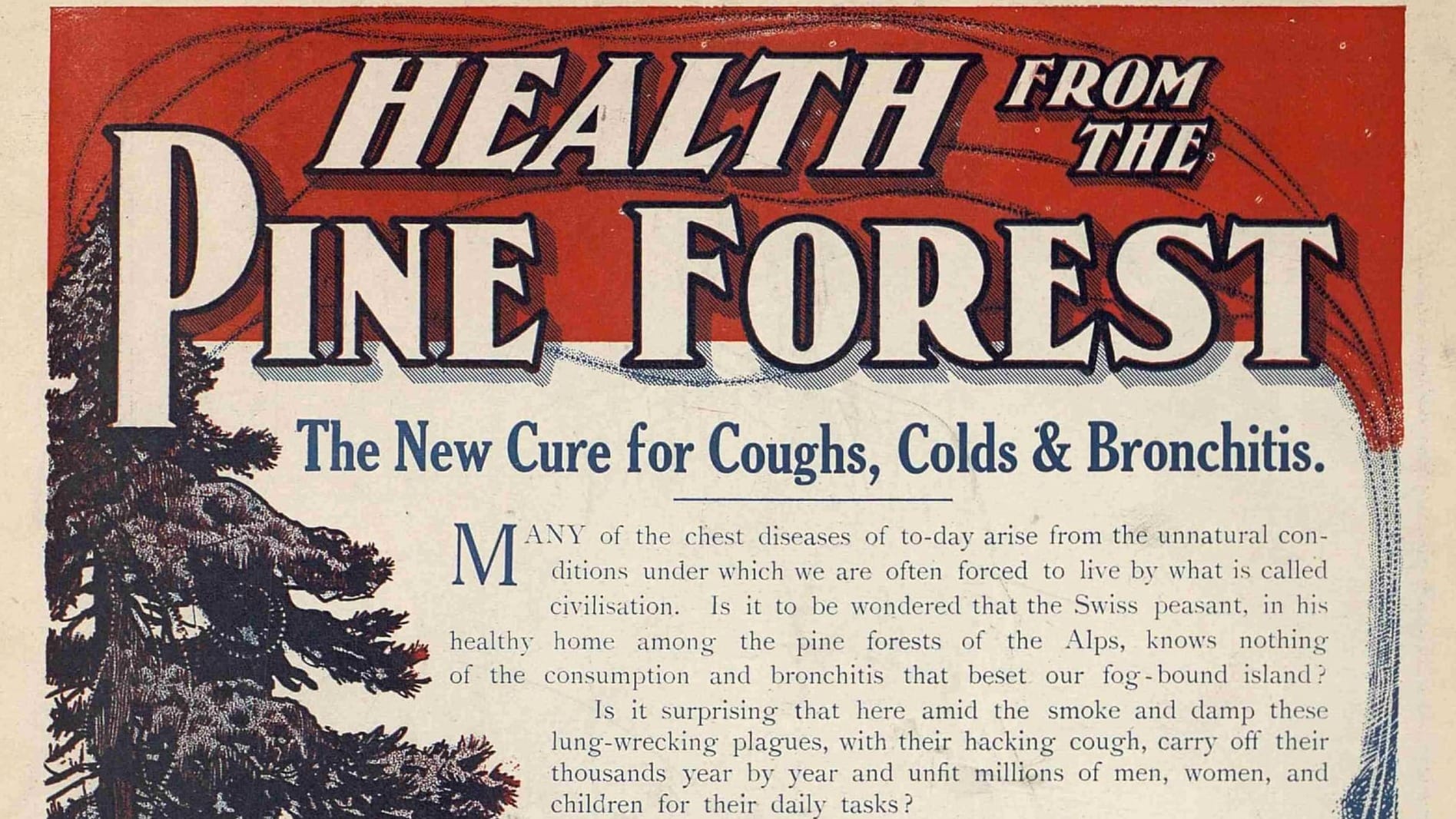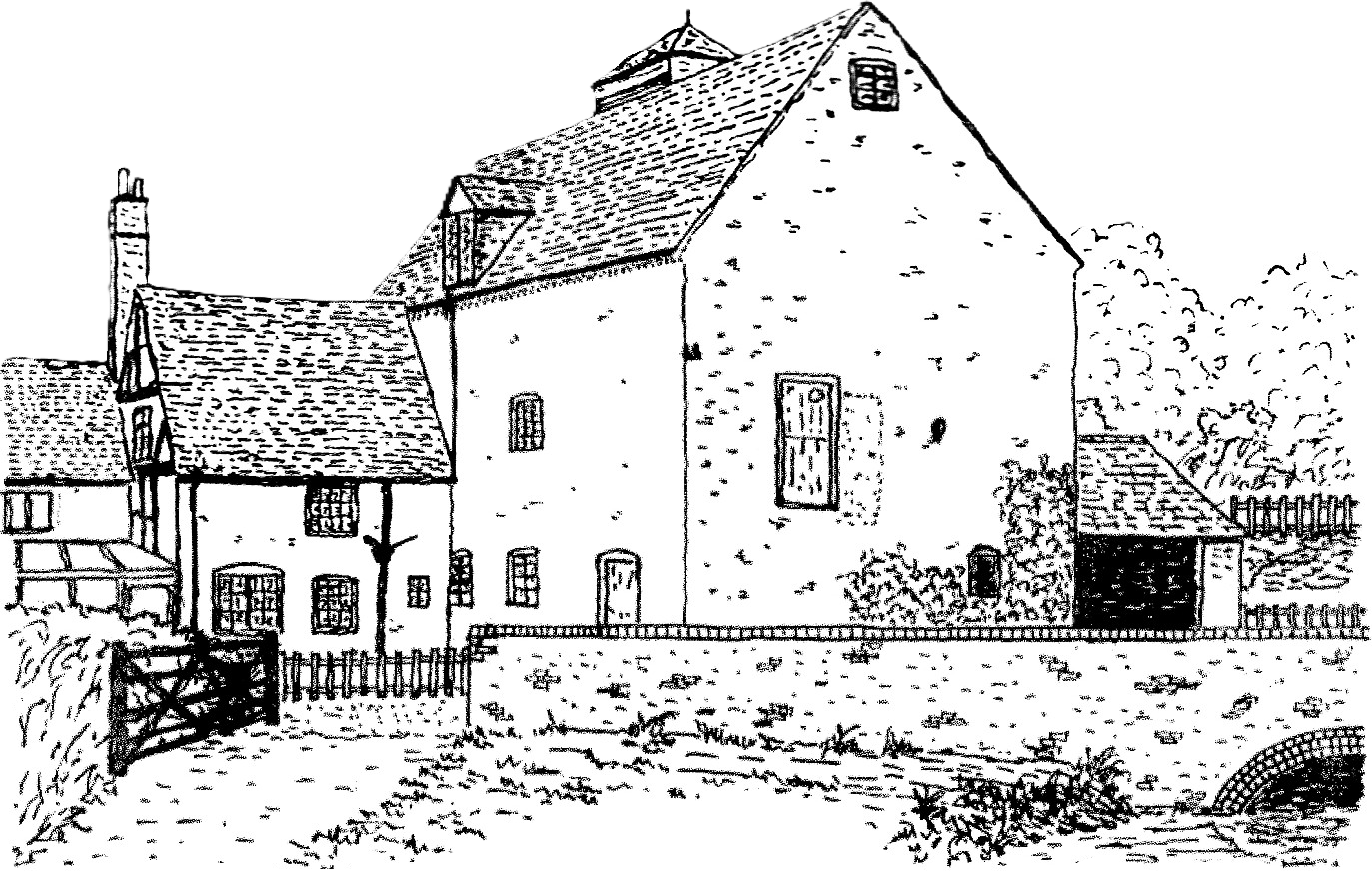Miller's Asthma, the hidden cost of being a miller

Behind the comforting aroma of freshly baked bread lies a lesser-known occupational hazard: Miller’s Asthma, a form of occupational asthma caused by inhaled allergens. The primary culprits are wheat and rye flour dust, but people can also be affected by storage mites and fungal spores. Symptoms include coughing, wheezing, shortness of breath, and nasal irritation.
This condition has impacted the health of workers in the baking and milling industries for centuries. In 1700, Bernardino Ramazzini, often referred to as the father of occupational medicine, wrote that bakers often suffered from "asthmatic afflictions" due to the inhalation of flour dusts, in his pioneering work, 'A Treatise on the Diseases of Workers'.

In 1866 the Burnley Gazette reported:
It is known that persons who work in flour mills for any length of time acquire a condition of lungs, from inhalation of flour dust, which gives rise to what is called miller's asthma,"a disease distressing, permanent, and ultimately fatal.
The 1884 report from H M Inspectors of Factories confirmed this sorry state of affairs:
Millers suffer greatly from affections of the respiratory organs, and the liability is much increased by the long hours of the trade, varying from 16 to 21 per day, though it is to be hoped that the latter are exceptional. Pulmonary and bronchial complaints are very frequent amongst the employees in flour mills, as are also ruptures from lifting heavy weights, and the insanitary character of the work is evident from the fact that the average duration of a miller's life is only 45 years; what is known, indeed, as " emphysema" of the lungs, from constantly breathing the minute particles of flour dust, is commonly called "Miller's asthma" throughout the trade.
Here's a lengthier description, published in the Globe in April 1885 after the release of the latest Inspectors of Factories report:
MILLERS' ASTHMA - That nature is more merciful than man is an ethical lesson which may be learnt from the present condition of the unfortunate persons who earn their livelihood in flour mills. In the last annual report of the Chief Inspector of Factories there is some striking evidence to the dangers and disadvantages under which these men still suffer. "It is quite exceptional," as Major Beadon declares, "to see a person who has worked any time in a flour mill who is not more or less affected in the respiratory organs; and, contrary to the rules in most trades, the majority readily admit and deplore the fact." There is abundance of medical testimony as to the manner in which the flour-dust injures the lungs. It is carried with the inhaled air into the bronchial tubes, which it partly obstructs, and so causes an irregular pressure of the inspired air upon the lungs, 'some portions of which have to support a greater strain than others. Hence a rupture of some minute vesicular structure occurs, leading to that disease which is technically called emphysema. The attendant symptoms are suffocated breathing and spasmodic cough, the effects of which are so serious that the average life of millers is said not to exceed 45 years. Unfortunately, also, there can obviously be little hope of such causes ceasing to produce similar results, so long as the millers’ trade exists. Improved machinery may do something; but even this can hardly operate directly to lessen the quantity of flour dust filling the air inside a grinding room.
Treatments of the Past
In the past, there were no effective treatments for miller's asthma. It was thought that ordinary cough syrups could help the condition. I particularly liked this Veno's advert from WW1, featuring Augustus John Swift, formerly a baker. He served as an Acting Corporal and thankfully survived the war.
ASTHMA CURED. "Somewhere in France" there is a soldier whose presence there is a living proof of the wonderful efficacy of Veno's Lightning Cough Cure in curing Asthma, as well as the simpler coughs and colds so often neglected, but which frequently lead to more serious conditions. The wife of Pte. Swift, S/4 040221, ASC, seen recently at her home, 14 Victoria Cottages, Kew Gardens, Surrey, said: "My husband used to suffer dreadfully (for twelve years or more) with baker's asthma. and never could find relief in treatment by doctors or by attending hospital. But Veno's cured him so thoroughly that he was able to join his Majesty's Army. I never miss an opportunity of telling sufferers about it." Could proof be more positive? Get your bottle of Veno's Lightning Cough Cure today and keep it always at hand.
Another supposed cure was Peps tablets, with the peculiar tagline, "a Pine forest in every home". They advised:
Every worker in dusty trades should take at least one Pep at night on leaving work, to clear the lungs and throat of accumulated impurities. Where lung-mischief has already made its appearance, a Peps tablet should be taken whenever an attack of coughing, throat irritation, or difficulty in breathing comes on.

Miller's Asthma at New Hall Hill?
I am gradually checking through the millers at New Hall Mill to see whether records show any deaths relating to lung conditions. The Twamley millers certainly had quite short lives:
- William Twamley (1) lived to age 52
- William Twamley (2) lived to age 49
- William Twamley (3) did better, he lived to age 62
- William Twamley (4) lived to age 48.
Unfortunately, the first three pre-date compulsory death registration, and in the absence of further clues, I cannot confirm the cause of death. The last William Twamley left the mill and disappeared from records between 1837 and his death in 1855. It would be interesting to know his cause of death, as he was the youngest of the four when he died.
- Charles Henry Brockas was the miller until at least 1851, but some time between 1851 and 1858 he moved to Warren House and became a farmer. He may have left the mill in the care of journeymen. He was only 36 when he died. Could he have been suffering from asthma?
By contrast Ben Styles and his descendants had long lives, so perhaps we can assume that they were not sensitive to the flour dust:
- Ben Styles lived to 79
- Charles George Davies lived to 96
- Ben Davis lived to 82
Modern day
According to the UK's Health and Safety Executive (HSE), flour dust is among the top causes of occupational asthma, with bakers having a higher incidence rate than many other professions. The minimise the health risks, the Control of Substances Hazardous to Health (COSHH) regulations has set workplace exposure limits for flour dust, and efforts have been made to introduce low-dust flours, improve ventilation systems, and use personal protective equipment.
References
- British Newspaper Archive
- World Allergy Organization: Baker's Asthma
- Occupational Asthma: Baker Case Study
- Envirochem: Tackling Flour Dust Exposure Risks in Mills and Bakeries
- HSE: Bakery Uses Low-Dust Flour to Reduce Asthma Risk
- Temporal Trends of Flour Dust Exposure in the United Kingdom, 1985–2003
